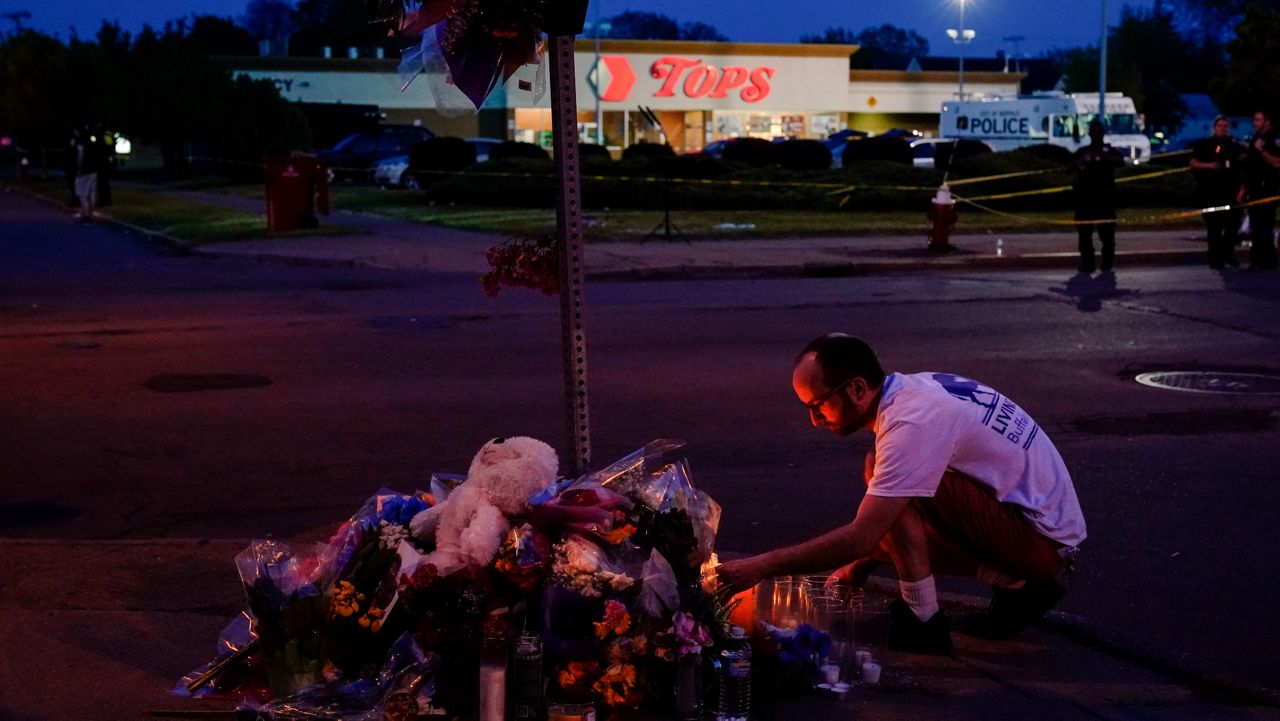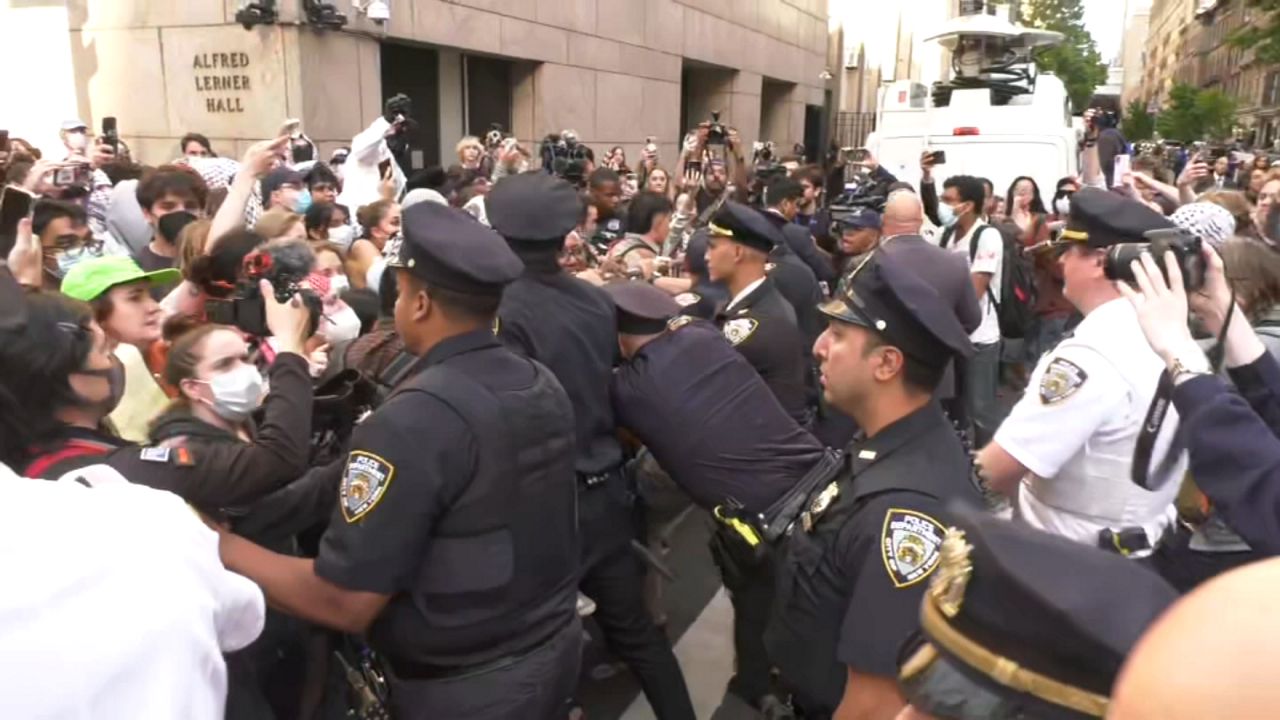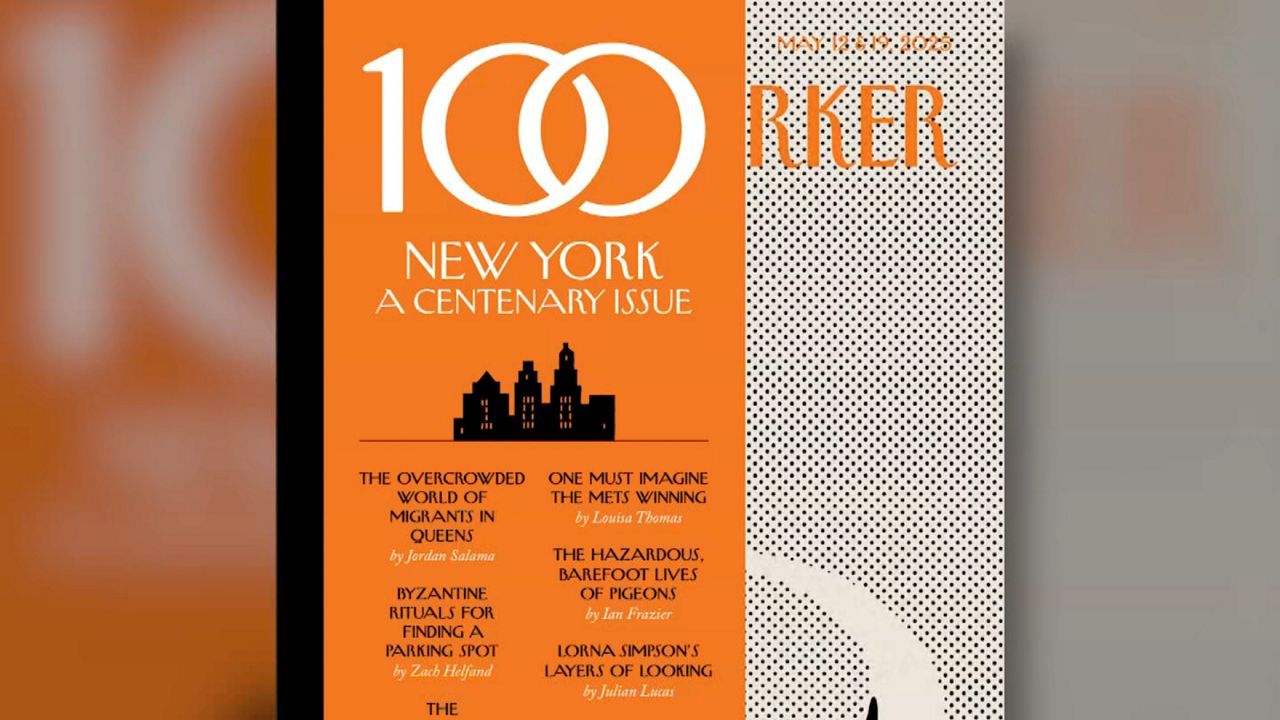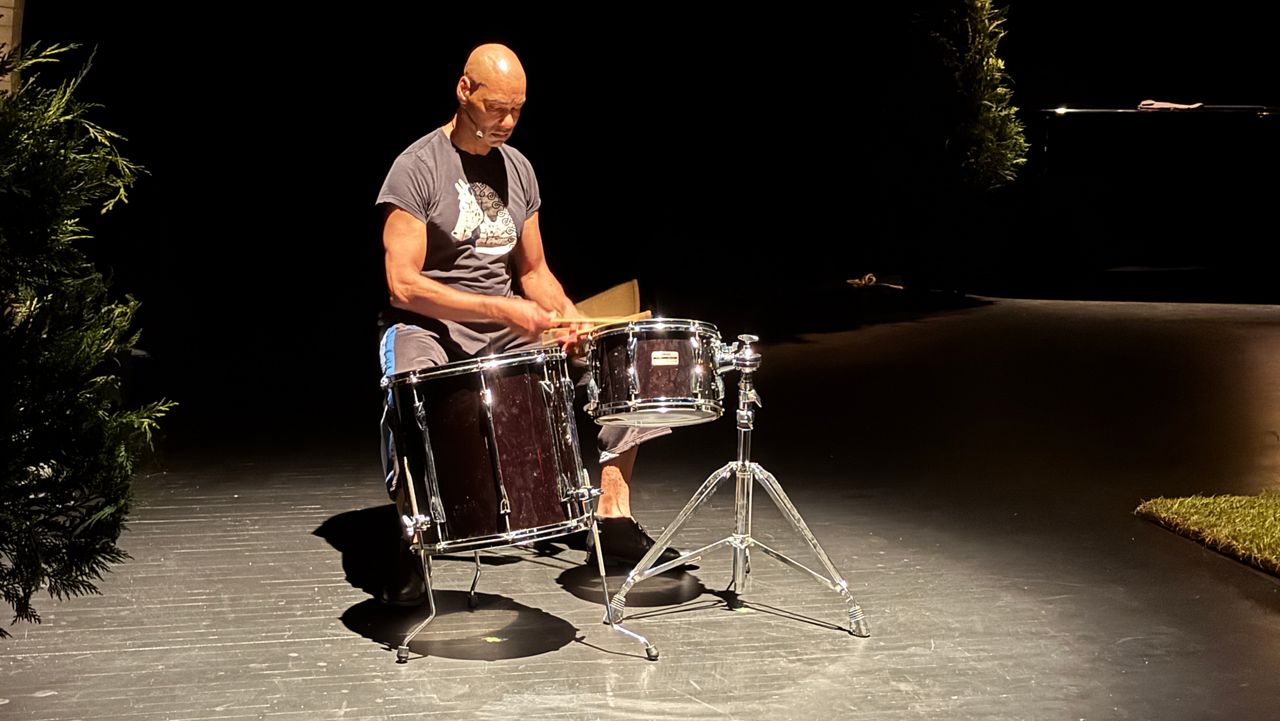The mass shooting at a Buffalo, N.Y., supermarket on Saturday is highlighting long standing concerns among experts and authorities about the violent power of racist extremism in the U.S. to destroy the sense of peace and safety in nonwhite communities, and inflict fear across a fragile American society.
The shooting, carried out in a predominantly Black neighborhood of the city, left 10 people dead and three injured; 11 of the victims were Black.
It is the latest attack in the U.S. that authorities say was carried out by white supremacists, following massacres at a Pittsburgh synagogue in 2018, and a Charleston, S.C., church in 2015.
Days before the killings, the shooter posted a publicly available Google doc that was laced with fears of a “Great Replacement”: the more than century-old idea that white Americans face an existential threat from the flourishing of Black and nonwhite immigrant communities.
The hate communities that support this idea have become more and more readily accessible to young white people, predominantly men, according to experts, through both social media chat forums and TV broadcasts on Fox News, the most-watched cable news station.
The rising visibility of hate cultures has alarmed parents across the country who are searching for ways to identify, prevent or reverse their child’s participation in a movement that seeks to fatally undermine multiracial societies.
“We’re now living in a moment where white supremacist conspiracy theories have become part of the mainstream political rhetoric,” said Amy Spitalnick, the executive director of Integrity First for America. “That’s made it harder to identify someone who is going to become a violent extremist, and who is just parroting a political figure. And those two things can be one and the same.”
Experts on preventing radicalization of teenagers say while the risks are omnipresent in the contemporary age of social media, disinformation and social disconnection, there are concrete actions that parents, teachers and caregivers can take.
The central keys, they say, are recognizing when your child is disconnecting socially, being curious about their online activity, and engaging them in ongoing critical discussions about their worldview and the ideas that are shaping it.
“Debating with a young person fact to fact to fact is not going to be the way to go,” said Christine Saxman, a former educator and diversity consultant who co-authored a toolkit for parents on recognizing and preventing radicalization for Western States Center, a nonprofit that provides pro-Democracy resources. “You want to be on that critical thinking journey with them, not fighting them.”
Racist extremist groups typically seek to recruit young white men to their cause, Saxman said, though there are not clear socioeconomic, regional or cultural predictors for which teens will be curious about their bigoted ideas.
Often, the road to radicalization begins with what Amra Sabic-El-Rayess, an associate professor at Columbia University’s Teachers College, calls an “educational displacement,” a moment or transition where a child feels alienated from their primary social space, typically the classroom.
“It starts with the feeling of either being invisible or being displaced from the narrative,” Sabic-El-Rayess said. That can mean being unable to express their frustration with seeing a nonwhite or immigrant classmate excel ahead of them, or feeling unfairly ostracized for making a joke that is perceived as bigoted.
In the case of one parent who recorded her effort to pull her 13-year-old son away from far-right groups online in a viral 2019 Washingtonian article, he faced what she deemed an unnecessarily severe backlash from his school’s administration after laughing at a sexist meme.
The child may then seek to replace their authority figures, retreating online to groups that place their individual experience in a supposed larger context, in which white men are victims of the pursuit of diversity and inclusivity.
“That personal grievance is suddenly associated with a larger cause, with a larger ideology,” Sabic-El-Rayess said.
In the manifesto apparently authored by the Buffalo shooter, he traces his radicalization to the forum-based website 4chan, where the shooter wrote that he was introduced to the “Great Replacement” idea through memes, internet jokes and infographics — the common languages of online culture.
Finding a community that offers a reason for their social ostracization can be empowering for teens, Sabic-El-Rayess said, and even make them feel they are part of an intellectual elite that seeks to prevent something that the rest of the world does not believe is real.
“Now they’re provided in this online world a sense of belonging, recognition, and a sense of purpose,” she said.
Preventing or reversing this process is a matter of thoughtful but consistent discussion with the child, said Shelly Tochluk, a professor of education at Mount Saint Mary’s University.
Parents need to recognize that this behavior stems from the same biological processes that prompt much of teen behavior, namely the urge to figure out who they are and what their place is in the world, said Tochluk, who co-authored the toolkit for parents with Saxman.
“The same thing that turns a teen into fighting climate change is the same underlying biological process that can turn a teen into thinking they're supposed to fight to preserve their country,” Tochluk said.
To that end, trying to act as a brick wall between them and that search will not work, she said.
They might be spending lots of time on Discord (the gaming chat app where much of the violent far-right rally in Charlottesville in 2017 was planned) or watching video games on Twitch (where the Buffalo shooter live-streamed the killing spree) or getting their news from YouTube (where the algorithm has often pushed people toward extremist content, according to studies by academics and groups that combat hate).
If so, Tochluk said, ask them about what they’re reading, what memes they’re looking at and why they think they’re interesting. If they are appearing to engage with ideas that espouse bigotry, ask them to think critically about the repercussions of those views.
“Give them a chance to use their voice, respect their voice, but from a critical consciousness perspective,” Tochluk said. “Does this go to a world you would want to live in? Explore that with them, instead of telling them how they’re supposed to think.”
It is incumbent upon parents to learn who the sources of content are in a child’s online experience, Saxman said, whether that’s influencers on TikTok or “news” broadcasters on YouTube.
“If my child is spending a lot of time on far-right speakers, that means they're getting served up even more far-right content,” Saxman said.
Sabic-El-Reyess is launching an online continuing education program for educators this summer that she hopes will make teachers able to identify possible signs of radicalization. The program, funded with a grant from the Department of Homeland Security, is open to anyone who works in education, she said.
Educators, she said, shouldn’t shy away from directly engaging controversial issues, such as immigration and racism, that are at the heart of the “Great Replacement” worldview. Students should be made to confront the historical and present-day repercussions of such ideologies, in age-appropriate formats, and encourage in-class discussion led by students’ curiosity over headline issues like book banning, critical race theory and elections.
“What we can do is build protection so that when a teen is out in a social media space, and an idea pops up that advocates hate, they can deliberately say, ‘I’m not buying it,’” she said.
To make that possible, all levels of government need to step up and fund this kind of training for educators and parents, Spitalnick said.
“The fact that we're still having this conversation about what the government can do is a sign that it's not doing enough,” she said. “Parents shouldn't have to rely on NY1 to identify signs of radicalization in their kids.”
Spitalnick pointed to a bill that would examine the effectiveness of Holocaust education in New York schools that has been stalled in the state legislature since 2018. A 2020 survey found that about a fifth of respondents aged 18-39 in New York state believed that Jews caused the Holocuast, while two-thirds reported seeing Nazi symbols in their communities or on social media in the past five years.
These kinds of knowledge gaps make racist extremists’ jobs much easier, Spitalnick said, because many of their theories, including the “Great Replacement,” rely on age-old conspiracies about secret Jewish control of society.
“There’s very little that's new in the white supremacist lexicon,” she said. “It’s rather language that's shaped for the moment that's rooted in age-old conspiracy theories.”
Parents should use these historical realities to encourage children to think for themselves on the ultimate purpose of racist ideologies, Tochluk said, supporting their journey away from those views while helping them build up their own agency.
“You can't take it away from them,” Tochluk said. “So you might as well engage with them.”








